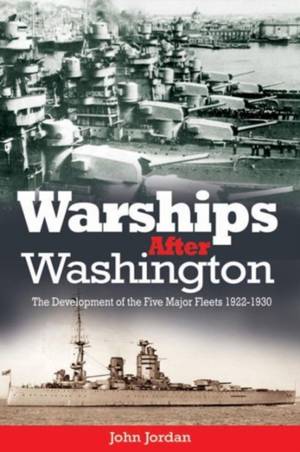
- Afhalen na 1 uur in een winkel met voorraad
- Gratis thuislevering in België vanaf € 30
- Ruim aanbod met 7 miljoen producten
- Afhalen na 1 uur in een winkel met voorraad
- Gratis thuislevering in België vanaf € 30
- Ruim aanbod met 7 miljoen producten
Zoeken
Omschrijving
The Washington Treaty of 1922 was a watershed event designed to head off a potentially dangerous arms race between the major naval powers. The terms of the treaty included an agreement to legally bind limits on the number and size of principal warship types. Warships After Washington is unique in its coverage of the political and strategic background of the treaty.
Specificaties
Betrokkenen
- Auteur(s):
- Uitgeverij:
Inhoud
- Aantal bladzijden:
- 277
Eigenschappen
- Productcode (EAN):
- 9781591145837
- Verschijningsdatum:
- 30/08/2015
- Uitvoering:
- Paperback
- Afmetingen:
- 233 mm x 157 mm
- Gewicht:
- 770 g

Alleen bij Standaard Boekhandel
+ 102 punten op je klantenkaart van Standaard Boekhandel
Beoordelingen
We publiceren alleen reviews die voldoen aan de voorwaarden voor reviews. Bekijk onze voorwaarden voor reviews.








